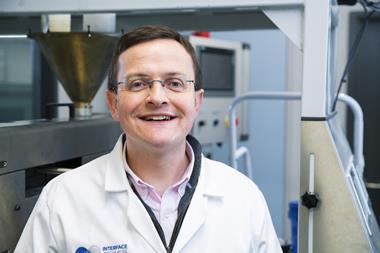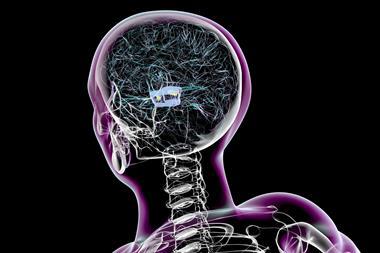Precession of quantum mechanical angular momentum in atomic oxygen can be directed and pictured, potentially allowing more detailed reaction studies
Previously unseen levels of control can be exerted over atomic orientation, movies recorded by researchers in the US, UK and Netherlands show. This is the first-ever imaging of an atomic angular momentum vector precessing in a magnetic field, a motion analogous to a spinning top spiralling about Earth’s gravitational field as it slows.
Precession arises because angular momentum vectors, like nuclear spins, have an associated magnetic moment that can be made to align with a magnetic field. This phenomenon is exploited in NMR spectroscopy and magnetic resonance imaging. Having shown how to monitor precession changes as they apply a magnetic field, Claire Vallance of the University of Oxford, UK and her colleagues now hope to study how orbital positioning influences chemical reactions. ’In principle, we could take a p-orbital in an atom and see how its reactivity changes as it is rotated relative to a second reactant molecule,’ Vallance told Chemistry World.
Together with David Parker at Radboud University Nijmegen, the Netherlands, and Richard Zare at Stanford University, US Vallance jointly led the effort to study precession using velocity map imaging (VMI). This technique is widely used to study gas-phase photochemical reactions, and Vallance and her colleagues used it to image molecular oxygen dissociated by a UV laser.

The resulting oxygen atoms possess highly aligned orbital angular momenta, which the team then caused to precess by applying a magnetic field for a fixed time. They then ionised the atoms with a second, polarised, laser and used an electric field to accelerate the ions towards a detector that maps their positions in three dimensions. ’The movie shows three different slices through the 3D distribution,’ Vallance explains.
An atom’s ionisation probability, and therefore its detection probability, depends on a quantum mechanical interaction between its angular momentum distribution and the polarisation of the laser. Applying the magnetic field for different durations yields time-lapse movies of the precessional motion. ’As you make the distribution precess, the detection probability of the atoms changes, and that’s what you’re actually seeing,’ Vallance says.
University of Leeds, UK VMI researcher Ben Whitaker called the work an ’elegant and carefully executed experiment’. He added that trying to control orbital alignments of reagents in bimolecular reactions would be ’an interesting endeavour’. ’For this reason it is an important contribution,’ he says.
Andy Extance
References
S-M Wu et al, Nature Chem., 2010, DOI: 10.1038/nchem.929






No comments yet